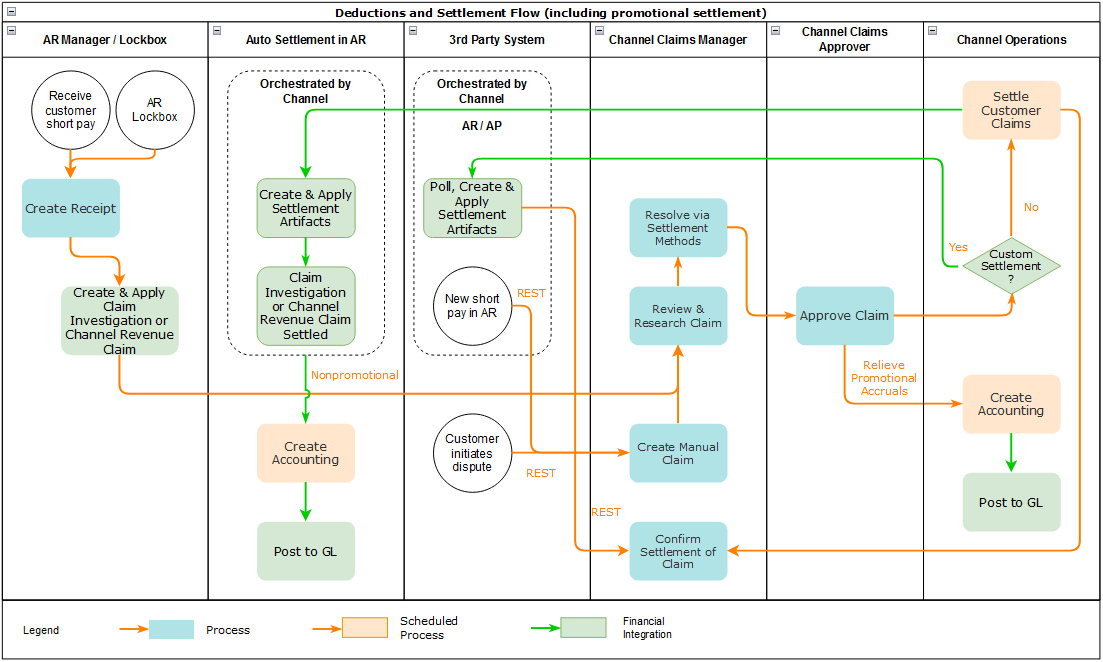How Deductions and Settlement Works
Overview

When a customer short pays you, the flow is:
- Receive a short pay from a customer, including from the Receivables lockbox.
- Create a claim from Receivables for the short pay difference within the receipt.
- Assign ownership of the claim.
- Research and resolve deductions quickly and accurately.
- Settle the claim.
With Deductions and Settlement you can:
- Centralize deductions and overpayments, with accountability and aging by:
- Supporting lockbox
- Creating manual claims
- Assigning claim owners
- Setting up aging methods
-
Resolve deductions by:
- Associate promotional accruals
- Creating credit memos
- Applying open credit memos and open overpayments
- Applying write-offs
- Applying chargebacks only for invoice deductions
- Resolve overpayments by:
- Creating invoices.
- Applying open deductions.
- Approve your claims.
- Schedule the Settle Customer Claims process periodically to settle the claims in Receivables in a ready-to-use and tightly integrated manner. The settlement details are brought back to Channel Revenue Management to complete the flow.
- Analyze the root causes behind deductions, with the help of claim types and claim reasons assigned while resolving the claim.
- Proactively analyze write-off thresholds through occasional review of claim write-offs.
Business Process Flow
